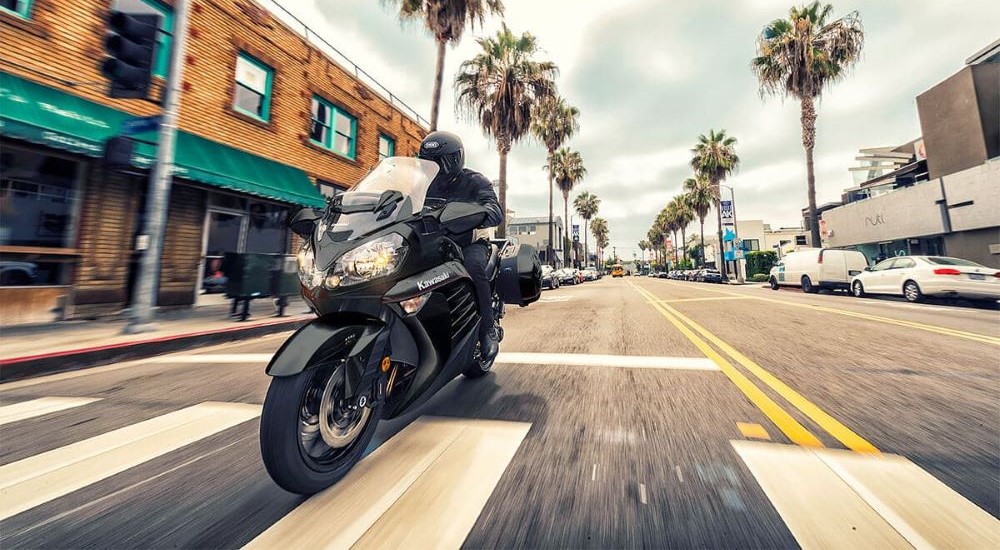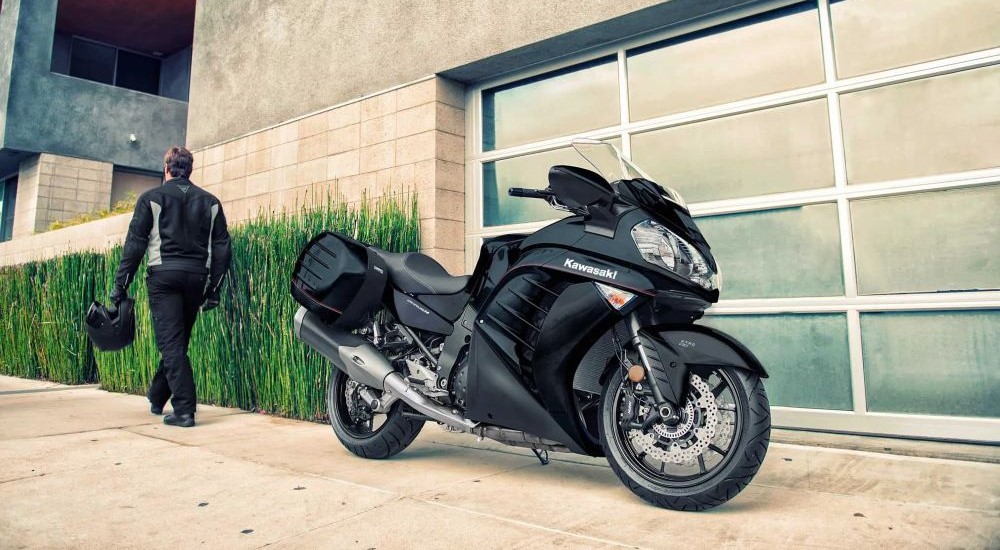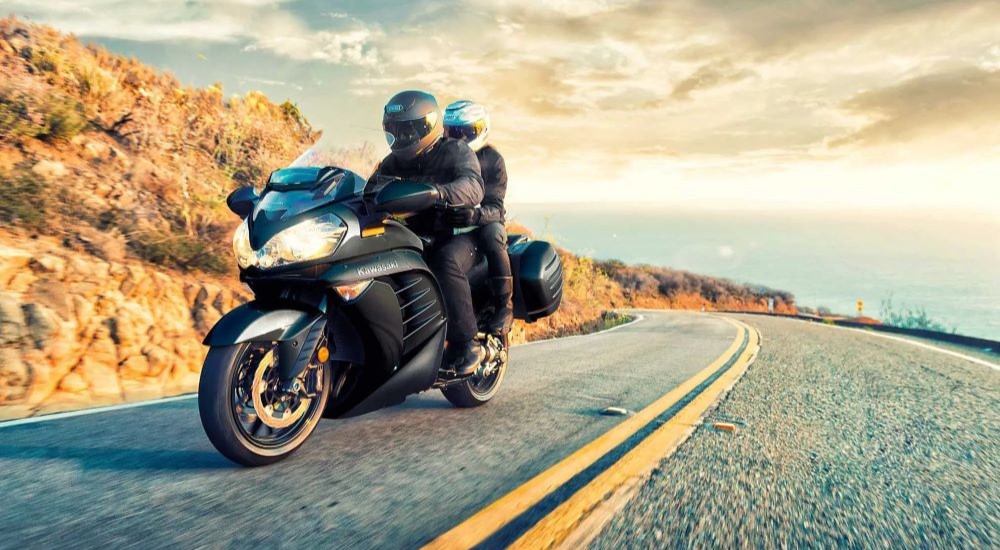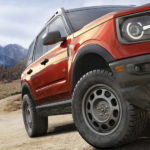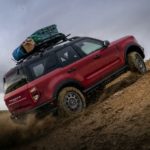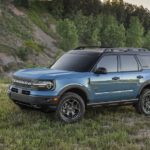Most will agree that BMW introduced the world to sport touring motorcycles with the R100RS in the late 1970s. However, even then, the BMW name came at a high price, and made these hybrid bikes unattainable to many, as European manufacturers dominated the market and charged a premium because of it. Fortunately, that changed in the late 1980s when Kawasaki capitalized on the success of its water-cooled Ninja 900 and introduced the Concours ZG1000.
Although its BMW rival, the K100LT, was slightly faster, the Concours had more going for it, and offered a more engaging experience in the saddle. Moreover, riders didn’t have to spend a fortune on a bike that combined Kawasaki’s renowned handling with the amenities of a touring model. The winning combination skyrocketed the Concours to widespread acclaim, with its budget-friendly price making it accessible to the masses and one of the most popular new and used Kawasaki motorcycles for sale for generations.
But what makes the Kawasaki Concours so incredible beyond its affordable price tag? How has the Concours defied tradition by remaining relatively unchanged in a market built around frequent updates and new technologies? How has its continuity earned it a cult following among riders across the country?
The Definition of a Sport Touring Bike
Sport touring bikes give riders the best of both worlds by offering sportier handling and the comforts of a long-distance tourer without the heavier platform. Throughout the 1970s and 1980s, these models focused on mid-range torque for improved performance rather than high horsepower like pure sport bikes. Likewise, they also offered more wind protection and larger fairings to reduce head buffeting at highway speeds, saddlebags to store travel necessities, bigger fuel tanks, and rider amenities like heated handlebar grips and plush seating.
With the benchmark set by models like the BMW R100RS, Kawasaki set out to take the segment to an entirely new level with the Concours, putting models like the BMW K100RT on notice. Kawasaki turned to its water-cooled Ninja 900 and Ninja 1000 for inspiration, using the 1000cc engine as the basis for the Concours. Kawasaki replaced the 36mm carburetors with 33mm versions, modified the cams to be less aggressive, and outfitted the bike with smaller exhaust pipes. The improvements reduced the 1000cc’s output from 125 horsepower to 100, but increased its mid-range torque to complement its revised gear ratios to maintain that pulling power in the top four gears, with a peak of 65.7 lb-ft of torque around 6,000 rpm.
Although the Concours produced slightly less horsepower than its BMW rival, the Kawasaki struck a chord with riders and earned widespread praise across the industry. Motorcyclist magazine compared the models, surprising everyone with their results when they reported that the Concours was “superior to the BMW in almost every aspect imaginable,” and calling it the “most practical, useful, and competent motorcycle made.” Finally, European manufacturers no longer had the edge in the segment. The Concours proved sport touring bikes could be affordable without compromising capability, handling, or the luxuries expected of a long-distance road warrior.
Kawasaki’s Promise Not to Change
The motorcycle industry in the late 1980s was defined by constant changes and upgrades that made it hard for riders to keep up with the latest trends. New bikes quickly became outdated, leading to widespread buyer’s remorse among those with a penchant for the latest features. As an outsider, Kawasaki recognized this and offered something different with the Concours that surprised everyone.
Instead of promising frequent updates and modifications, Kawasaki was so confident that it got the Concours right the first time that it promised minimal changes for the next five years. The revolving door of new models and the constant pressure on riders to buy the latest generation wasn’t a factor. After its first year on the road, Kawasaki only made subtle changes, like upgrading the windscreen and repositioning the handlebars higher. If current owners wanted these changes, they could simply replace a few parts instead of the entire motorcycle.
Kawasaki kept its promise, introducing the bike’s first round of major improvements in 1994. Even then, the updates were modest compared to others in the industry, proving Kawasaki didn’t have to reinvent the proverbial wheel, but polish and fine tune it based on rider needs. This redesign ushered in several improvements, like a new fork assembly with spring preload adjusters, updated brake calipers and rotors, a better seat, a wider front wheel for improved handling from the 670-pound bike, and a revised instrument cluster.
The Next Chapter for the Concours
After years of minimal changes, the Concours began its second chapter in the Kawasaki lineup in 2007 with the debut of the larger and more capable Concours 14. Officially known as the GTR1400, the Concours 14 continues the bike’s rich legacy as the king of the sport tourers. Kawasaki guarantees as much by outfitting the next-generation Concours with a larger 16-valve inline-four engine. With a displacement of 1,352 cc, the powerhouse produces over 157 horsepower, up to 100 lb-ft of torque, and top speeds of 153 MPH.
Kawasaki also introduced a host of new features and upgrades to the Concours to enhance its performance and improve the rider experience. For example, the latest generation offers an anti-lock braking system, with 2010 or newer models equipped with traction control and an updated version of the Kawasaki Advanced Coactive-Braking Technology. The system optimizes rider control by linking the front and rear brakes for smoother stopping power, letting the rider tailor the system to their preferences using a switch on the handlebar.
Beyond the addition of linked braking, the Concours 14 saw several other improvements between 2015 and 2017. For example, Kawasaki fine tuned its gear ratio to provide smoother starts, stiffened the rear suspension to better accommodate the gear changes, and improved its steering at low speeds. These updates complemented several other improvements to rider comfort, like the revamped seat that enhanced the rider position for optimum control over the two-wheeled powerhouse.
Tried and True: The Concours Never Falters
Since its introduction in the late 1980s, the Concours has gained a cult following of riders who appreciate everything it offers and its history in redefining the segment of sport touring bikes. Where rivals like BMW force drivers to spend a small fortune, Kawasaki refuses to ask as much. Instead, it offers the Concours in a highly valuable package that makes it a great find as a new or used model. But the appeal doesn’t stop there.
The sheer reliability and capability of the Concours’ beefy engine add to its allure because riders can just as confidently invest in a used model as they can in a new model. Motorcycle miles are different than car miles, with bikes like the Concours capable of logging thousands of miles without breaking a sweat. Moreover, Kawasaki’s minimal updates to the engine over the last three decades prove its innate ability and that Kawasaki got it right the first time. The Concours’ heartbeat is potent and steady, promising a thrilling adventure anytime you get in the saddle.
Today, the Concours lives on in North and Latin America, where riders are quick to sing its praises as a bike that never falters. In an industry defined by constant changes and upgrades that lead to buyers’ remorse before the ink is dry on the sale, the Concours remains true to its roots and is a staple in the segment. Some might even call it the reigning king of sport tourers, a notable feat indeed.
